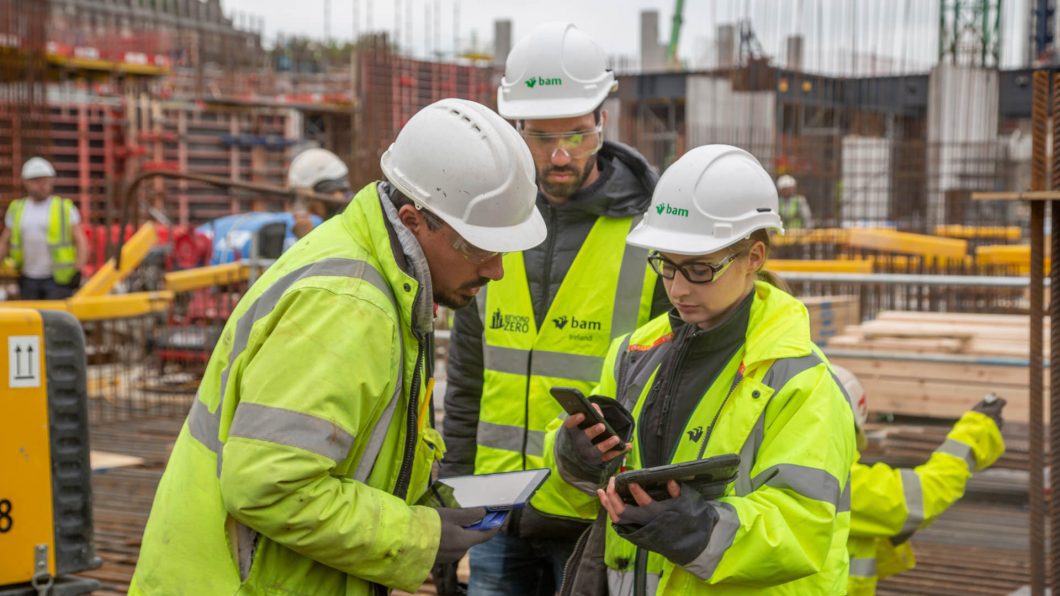Help us improve your experience. See content that is made for you!
See how IBM increased their efficiency by up to 30%!

Help us improve your experience. See content that is made for you!
See how IBM increased their efficiency by up to 30%!


At all levels of construction, from leadership to the field, it’s essential to have data that provides helpful insights and assists you in making the right decisions. But it all starts with making data accessible.
When data is democratized in construction, it enables teams to share information seamlessly, analyze, and leverage information internally, avoid time and cost overruns and win better bids.
Let’s explore.
Thinking about data, your organization likely relies on it to make decisions about your strategies, products, customers, and other aspects of your business. An abundance of data isn’t necessarily helpful, though, unless it’s organized in a way that makes it usable.
In the report Harnessing the Data Advantage in Construction, it was found that the cost of bad data for a general contractor bringing in $1 billion in revenue could be as much as $165 million. Of that lost revenue, around $7.1 million is a result of avoidable rework that was caused by the introduction or use of bad data.
Data democratization helps. Data democratization occurs when data is made accessible to everyone. It opens up transparency and is essential to all data-driven organizations.
Did you know that the majority of data captured in the construction industry goes unused? According to FMI, up to 95% of data from projects isn’t utilized.
Data silos are a big reason why data goes unused in the construction industry. Silos are a prominent issue in the construction industry due to large teams of stakeholders with data coming in from many different sources. Building a strong data driven culture and making sure data flows where it’s needed are fundamental to democratizing data.
Democratizing data starts with a strong foundation: your culture. A data-driven culture is key to an organization’s digital transformation. It is also a helpful support in staying competitive.
Becoming a data-driven organization gives you the actual insights you need to not only improve decision-making strategies but also improve efficiency and your end product.
Perhaps the most driving factor in turning into a data-driven organization is that you’ll increase the speed at which you can make decisions based on truly accurate insights.
The recent FMI survey found that 75% of respondents had a need for rapid decision-making while in the field, and 30% thought that over 50% of their data was bad. Since around a third of all poor decisions reported in the survey were attributed to bad data, it’s imperative to create a strong data-driven culture to improve information's accessibility and useability.
So how do you start building a stronger data culture? Start investing in specialized training and tools as well as getting buy-in from your teams and organization. This will help you begin to break down silos and make data more available and transparent.
Looking to improve your data strategy? Download our checklist.
DOWNLOAD DATA STRATEGY CHECKLIST
According to our recent report with FMI, Harnessing the Data Advantage in Construction, 50% of construction professionals ranked the inability to easily combine data from different sources as a top reason data was unusable.
Well-optimized data flows are the basis for efficient collaboration between multiple stakeholders working on a project. And today, manual tools just won’t cut it when it comes to optimizing the flow of data.
Teams need ways to easily share data across projects and teams. Bridge in Autodesk Construction Cloud for instance is a unique capability in that it can help democratize data for nearly everyone that plays a role in construction throughout the lifecycle of a project. The tool enables teams to streamline data flow by:
Learn more about Bridge in our recent blog.
Looking for more insights on the state of data in the construction industry? Download our report here and learn more about how to build a competitive advantage by eliminating data silos and improving data democratization.
You can also subscribe to our blog to receive the latest tips about how to create your construction data strategy and improve access to your company’s data.

May we collect and use your data?
Learn more about the Third Party Services we use and our Privacy Statement.May we collect and use your data to tailor your experience?
Explore the benefits of a customized experience by managing your privacy settings for this site or visit our Privacy Statement to learn more about your options.